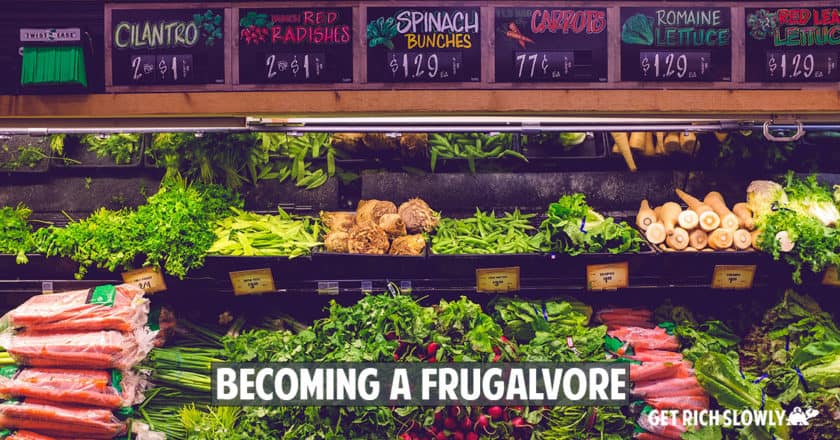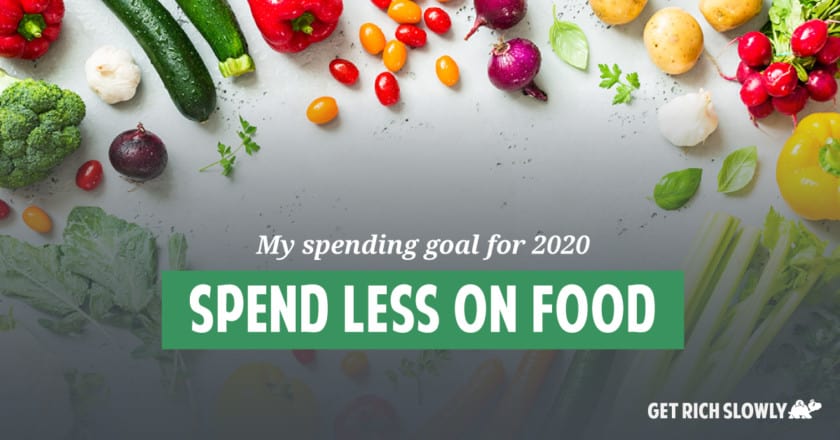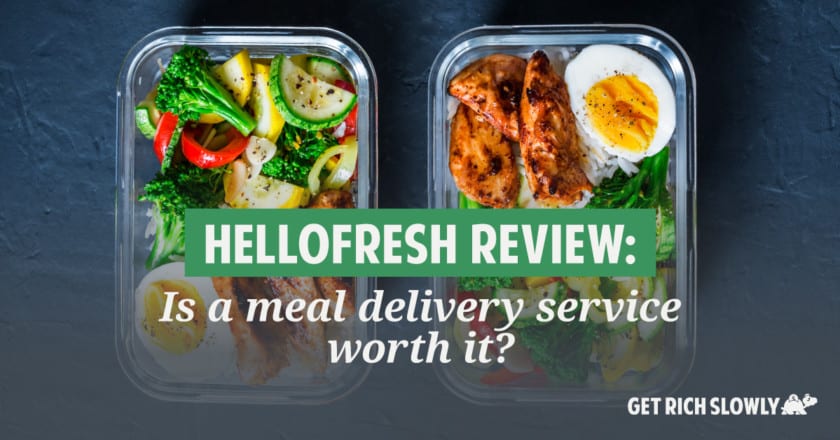Becoming a frugalvore: How to eat well for less

Hey hey, y'all. Here's an article from former GRS staff writer (and perennial reader favorite) Donna Freedman. This piece about becoming a frugalvore contains material that originally appeared at Donna's site, Surviving and Thriving. It's been modified for GRS. Enjoy!
The "locavore" movement is based on the idea of eating only foods grown within a 100-mile radius of where you live. Vicki Robin, for instance, might be best-known for her money manual Your Money or Your Life, but she also wrote a book for locavores in which she advocates a ten-mile diet.
I'm not a locavore but I have my own system, and I think it deserves its own name: I'm a "frugalvore". Becoming a frugalvore is pretty simple. You shop mostly (or completely) for what's on sale.
My 2020 in review: Steps in the right direction
Are you all ready for this? It's one of my favorite days of the year! I just spent an hour entering data in Quicken, then another thirty minutes analyzing it. It's time to run some numbers.
How well did I do with my financial goals last year? Was I able to cut back on dining out? (Hint: There was a global pandemic. What do you think?) Did my net worth rise or fall? Let's take a look.
First, let's review where I was at the end of 2019.
My spending goal for 2020: Spend less on food

I'm pleased to report that 2020 is off to a fine start. As I mentioned in my year-end review, 2019 sucked for me. I have high hopes that this year will be a vast improvement. So far, it has been.
The biggest change is that I'm not drinking alcohol. While this is meant as a January-only test, it's possible that I'll extend the experiment. It's saving me money and making me more productive. Plus, it may be helping with my anxiety and depression. I like that. (Thanks to the GRS readers who sent me private notes about their own struggles with alcohol. I appreciate it.)
I've made other small changes this year too. While I didn't make any resolutions -- I rarely do -- I'm using the new year as a prompt to alter some of my habits, to do things differently.
Food waste and food consumption in the United States
I've been thinking a lot lately about how much food I consume (and waste). I'm not happy with how I shop and eat, and it's not just because I'm fat right now. I don't like what I'm eating and I don't like how much food I'm throwing out.
Food waste is a huge problem in the United States. Most studies find that Americans waste about one-third of all food that enters the supply chain. This is insane. And when you consider that food spending is the third-largest component of the average American budget, this is a great place for most folks to boost their budget.
According to the 2017 Consumer Expenditure Report, the average household spends $7,729 per year ($644.08 per month) on food. If, as the USDA reports, 31% of the average family's food goes to waste, that's the equivalent of burning $2395.99 per year ($199.67 per month).
An introduction to square-foot gardening
I grew up in the country. My family always had a vegetable garden. For us, gardening meant a large plot, plowed and raked, then planted with long, widely-space rows of vegetables. It also meant weeding and hoeing, weeding and hoeing. Lots and lots of weeding and hoeing.
Gardening was a chore.
When my ex-wife and I bought our first home, we both wanted a vegetable garden, but we didn't want the drudgery that came with it. Besides, we didn't have a big space in the country — we had an average city lot. Fortunately, we discovered Mel Bartholomew's Square-Foot Gardening. Continue reading...
Two months with HelloFresh: A quick look at the cost and quality of HelloFresh recipes

When I published my first HelloFresh review last June, I liked the popular meal-delivery service. Kim's employer had given us a one-week free trial. The three recipes we received were fun and tasty. In the end, we chose not to sign up with HelloFresh but resolved to remember it for the future.
At the end of 2018, as I was evaluating my spending patterns, I was shocked by how much I was spending on food. It's embarrassing to show the following numbers, but facts are facts and truth is truth. I was spending over $1100 per month on food.

Beating the latte factor: One money nerd’s quest for the best cheap coffee

Like J.D., I'm a recent convert to coffee. For most of my life, I preferred to consume my caffeine cold in the form of Diet Coke. And then...fate intervened.
Four years ago, when my family moved to Oklahoma, my sister-in-law gave us our first Keurig coffee maker. I thought, "That's an interesting gift for a family that doesn't drink coffee."
But a set of sample k-cups came with the machine, so we started trying them.
HelloFresh review: Is a meal delivery service worth it?

"Hey," Kim said one day last week as she was leaving for work. "There's a package coming today from one of the doctors I work with. To thank all of his hygienists, he's sending us a trial of HelloFresh."
"What's HelloFresh?" I asked.
"It's a meal delivery service," Kim said. "Anyhow, it'd be great if you could bring in the package and put the food in the fridge. And it'd be even greater if you made one of the meals for dinner!"
3 ways to beat McDonald’s All-Day Breakfast menu on speed and price
Are there seasons in your life where you're more likely to swing through the drive-thru because you're tired, stressed, or overwhelmed?
Fall is like that for me. My friends start talking boots and flannel. Pumpkin Spice Lattes start showing up in my Instagram feed. And the corn mazes and pumpkin farms open for business.
And me? While I love colorful leaves and impossibly blue autumn skies as much as the next person, I cringe when fall arrives.
35 tips for packing a lunch your kid will eat
About four in 10 elementary school students bring lunch from home. But it's not likely to be a good one, according to a 2014 study from Tufts University.

Not one of the lunchboxes examined met all five National School Lunch Program standards, and only 27 percent of the meals met at least three NSLP recommendations (fruits, vegetables, low- or nonfat dairy, whole grains, and meat or meat alternatives).
Almost 25 percent of the brought-from-home meals lacked an entrée and, instead, were made up of packaged snack foods and desserts. Only 5 percent of the meals contained any vegetables.<